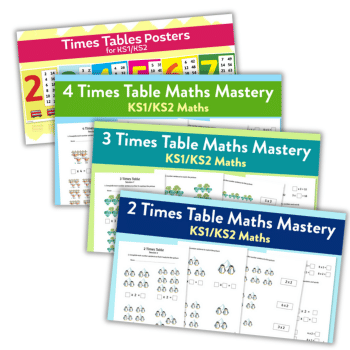Rote learning – How far can memorisation take students?

Is rote learning an effective teaching strategy? What about when it comes to times tables? We delve into the pros and cons of this teaching style…

- by Teachwire
- Classroom expertise and free resources for teachers

Join us as we delve into the effectiveness of rote learning. Find out about the benefits and limitations of this method and explore other teaching strategies that go beyond memorisation…
What is rote learning?
Rote learning is the process of memorising information through repetition without necessarily understanding its underlying meaning or context.
Why rote learning and parroting facts are not the same thing
The usefulness of rote learning in acquiring knowledge expertise shouldn’t be underestimated, says David Didau…
These days it’s rare indeed for children to be taught much by rote. Rote learning remains a much maligned and neglected method of instruction.
Certain ways of thinking about education are so ingrained that they become understood increasingly literally and separately from the complexity of ideas that originally gave them meaning.
We don’t even consider whether rote learning might sometimes be an effective tool. We feel, deep in our hearts, that it’s an unnatural instrument of evil, perpetrated on children in order to crush their eager little spirits.
“Rote learning remains a much maligned and neglected method of instruction”
Anything so unnatural, so unpleasant and laborious is clearly anathema to the aims of modern education.
Rote learning can certainly lead to some humorous mistakes. Consider the student who wrote in his science book ‘Three kinds of blood vessels are arteries, vanes, and caterpillars.‘
He’s clearly been made to parrot the facts but has confused the sounds. ‘Vanes’ just results in a spelling error, but ‘caterpillars’ shows he has no real understanding of the information he’s ‘learnt’. Obviously no one sees this as being desirable. This has, in turn, led to the unthinking, wholesale rejection of rote learning.
Rote learning and young children
Rote learning is something we do automatically, especially as very young children. It comes naturally whether we’re recalling the words to nursery rhymes, or reeling off stories word for word before we can read. And when we’re interested in information, remembering becomes much easier.
It’s probably useful to draw a distinction between rote learning and ‘inflexible knowledge’. What we ultimately want is for students to have a flexible understanding that can be applied to a wide variety of new situations.
However, this is unlikely to happen by magic. Inflexibility, it turns out, is a necessary stepping-stone to expertise.
Difference between rote learning and inflexible knowledge
So what’s the difference? Think about Hamlet’s ‘To be or not to be’ speech. If you attempt to memorise it without ever encountering it before, then your understanding is likely to be pretty superficial.
For instance, you may be able to pick the right answer to the following question:
Which of these descriptions best fits Hamlet’s state of mind?
- a) He’s excited at the possibilities life offers
- b) He’s considering suicide
- c) He worried about what might happen after his death
However, this doesn’t mean you’ll necessarily feel confident about writing an in-depth essay analysing Hamlet’s state of mind. The ability to answer the question above is an example of inflexible knowledge.
Inflexibility isn’t bad, it’s just limited. While you can demonstrate some superficial understanding, you probably won’t be able to see the deep structure.
Perceiving deep structure allows us to transcend specific examples and see the connections between different examples. In this case, you could compare Hamlet’s soliloquy with different examples from other Shakespeare plays, or see how this speech fits into Hamlet as a whole.
Concrete before abstract
The obvious solution would seem to be encouraging students to think about content in deeper, more abstract terms, so that they will be better able to generalise what they learn to new contexts.
Regrettably, however, this doesn’t work. Since students have yet to pass through the thresholds that lead to expertise, any attempt to shortcut the process is only likely to lead to inflexibility.
We can’t expect them to see deep structures until they’ve amassed sufficient expertise in the shallows. They need to learn the concrete before they can generalise to the abstract.
“We can’t expect them to see deep structures until they’ve amassed sufficient expertise in the shallows”
We all want our students to have a fluent understanding of the subjects we teach, but we have to be patient. If we want students to have an insight, simply explaining what the insight is ‘meant to be’ will prevent them from seeing it for themselves.
Instead, we can tell them as much about the surface features of problem as we can and wait for them join our dots.
Feeling frustrated that children have memorised their times tables but are unable to do long division is daft. As they learn more facts, see more examples and get more practice, they will slowly but surely move towards an expert’s understanding of the subject.
Oh, and if you’re of the belief that ‘You can just Google it’ – be aware that knowing where to go to find whatever it is you need to know is thin gruel indeed, and not at all the same as actually knowing something. Information is inert, but knowledge requires a mind to bring it into life.
Pros of rote learning
- The challenge of memorising stuff, whether it’s a Shakespeare sonnet or the seven times table, can be an enjoyable one
- We become better at retaining information through the practice of trying to retain it
- We notice details we would otherwise miss
- Multiple readings or viewings might help us better understand the material we’re learning
- Committing something to memory means we’ll always have it with us, without the need to look it up
David Didau is based at Swindon Academy as an in-house consultant. He blogs at learningspy.co.uk and is the author of several books. Follow him at @DavidDidau.
Times tables – is rote learning best?

The choice of whether to focus on memorisation or understanding when it comes to teaching maths is a false one, argues Jemma Sherwood…
A common error that many people make is setting up the ‘rote memorisation of mathematical facts’ in opposition to ‘understanding the underlying concepts’, as if the two are mutually exclusive.
Those who present this dichotomy suggest that maths teachers should focus their efforts on developing students’ conceptual understanding in order to help them to learn the content more deeply. They often use the term ‘rote learning’ pejoratively.
One of the areas people present these arguments most strongly is multiplication tables. Stanford University’s Jo Boaler went so far as to suggest that children suffer from ‘maths anxiety’, specifically because of teachers who focus on rote learning over understanding.
A false dichotomy
The problem is that this dichotomy is a false one. It is extremely important to have a strong number sense; to know, for instance, that to calculate 6 x 8 we could find 3 x 8 then double it, or 6 x 4 then double it. But how much easier and quicker it is if we just know that 6 x 8 is 48.
This is where those who suggest scrapping rote learning are missing something important. It is perfectly possible to teach number sense – to give students strategies for complex calculations – and to also expect them to learn certain facts to quick recall and fluency.
It should be the aim of every maths teacher to do both of these things.
“This is where those who suggest scrapping rote learning are missing something important”
Long-term memory
Research into long-term and working memory is beginning to gain traction in the education sphere. Many teachers are now becoming more aware of the fact that our working memory (the part of our brain we use to think about something in the here and now) is very limited. It can quickly become overloaded.
To reduce the load on our working memory and free it up to do more, we need to have as much as we can stored in our long-term memory.
For instance, if we want to factorise the quadratic x² + 2x – 63, the task becomes significantly easier if we can quickly spot the pair of numbers with a sum of 2 and a product of -63.
If, however, we have poor recall of the 9 or 7 times table, our working memory will be taken up with finding the correct numbers. This is rather than learning how to factorise the quadratic and thinking about why the method works.
In this example, and many others, one of the keys to conceptual understanding is the instant recall of number facts.
Quick recall
Rote learning doesn’t have to be Gradgrindian or fear-inducing. When thinking about how to teach times tables, chanting, low-stakes testing, regular whole-class repetition – even singing – can be a staple of both secondary and primary maths classrooms. In fact, they should be until all students know their times tables.
With quick recall of times tables facts, moving onto things like simplifying fractions, factorising linear and quadratic expressions or resolving problems with ratio and proportion becomes significantly easier. Limited working memory is freed up to focus solely on the new problem at hand.
From my experience, I would even argue that students achieve the best number sense when they know maths facts like number bonds and times tables by heart.
This is because they can then work with that knowledge – which is a whole lot easier than working without it.
“Students achieve the best number sense when they know maths facts like number bonds and times tables by heart”
I welcome the focus on mastery at primary. We need to give students significant time to develop strong number sense concurrently with memorisation of the number facts that underlie a successful grasp of future mathematical concepts.
If they become fluent in written methods of multiplication (and the other operations), when we present them with more complex problems they won’t find themselves up against unnecessary barriers.
I hope that mathematics will no longer be a cause of anxiety. Instead, we should aim for our students to leave primary school fluent in the essential building blocks. By the time they leave secondary school they should be able and confident mathematicians.
The opposing view
Craig Parkinson from Maths – No Problem! believes that learning multiplication facts can be achieved without resorting to rote learning...
Those who attended primary school in the 1970s will remember how times tables were learned then. We stood behind our chairs, chanting them over and over again at the end of the school day.
I remember the feeling of doing it as if it were only last year, never mind nearly 40 years ago. Why was it so memorable? Firstly, it was a unique activity. No other learning was done that way. Secondly, it felt slightly uncomfortable.
Why would we want to return to such a practice?
The Maths – No Problem! series draws on the work of Arthur J Baroody. He talks about the three stages of learning multiplication facts: counting, figuring out and then remembering.
“No other learning was done that way”
This is reinforced by the findings of Jerome Bruner. This is where students learn by moving from concrete examples to pictorial representations, then finally abstraction.
In Baroody’s work we see agreement with Richard Skemp’s ideas regarding relational understanding.
As teachers, we can control the inputs of learning but the processing is innate to the pupil. If we teach in a way that’s aligned with how they process information, the desired outcome of fluency can be more readily attained.
We have come a long way – pedagogically and societally – from the 1920s. Back then, Edward Thorndike promoted rote learning as a key component of learning.
Other strategies
There are now many more strategies available to students when it comes to learning their times tables. The work of Mary Folsom (1975) and John Trivett (1980) shows how to achieve efficiency regarding the learning of times tables.
The commutative nature of multiplication means that learning all your tables is both unnecessary and inefficient. We know that retrieval time for number facts, such as 6 x 2 = 12, is variable and dependent on how the student is exposed to this fact. (Compare learning ‘2 lots of 6’ to ‘6 lots of 2’).
It is wrong to blindly apply methods from the past at a time when we know so much more about how we learn best.
Repetitive learning of times tables ‘works’, but is it the most effective way? What does research tell us about methods that are more effective? And why?
Didactic contract
We know that learning times tables takes time. Children benefit from receiving repeated opportunities to count, then figure out before remembering.
To jump straight to ‘remembering’ causes pupils to experience the known difficulties of being prematurely exposed to abstract concepts.
We also deprive our students of the joy and challenge of learning; we cause learning to be done to them rather than being owned by them. They enter a didactic contract – they wait for the teacher to tell them what to know, and then they focus on remembering it.
“We also deprive our students of the joy and challenge of learning”
When we, as teachers, tell children they can do the nine times tables by using their fingers, we prevent students from discovering this for themselves. We also stop them from transferring their knowledge to create connections in multiple ways (3 x 9, for example, is the sum of 3 x 5 and 3 x 4).
The rote that we should have is repetitive teaching of number facts, whereby we, as teachers, regularly narrate students’ discoveries.
In teaching the idea that four groups of six are 24, for instance, we should first begin with concrete, tangible examples and then move to pictorial representations.
When we talk to our students about their learning, we show that we value their thoughts, ideas and discoveries. In return, they invest more of their resources in their own learning. This isn’t something that rote learning of times tables can achieve.
Jemma Sherwood is head of mathematics at Haybridge High School and Sixth Form and an SLE and previous finalist for Teacher of the Year in a Secondary School at the Pearson Teaching Awards. She blogs at jemmaths.wordpress.com and tweets as @jemmaths.
Craig Parkinson previously worked as a physics and maths teacher, and is currently a freelance educational trainer, consultant and coach.










